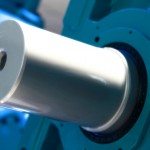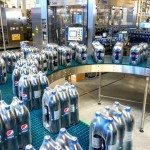Injection Molding
Injection moldingis amanufacturingprocess for producing parts by injecting material into a mold. Injection molding can be performed with metals,glasses, confections, andplastic thermoforming. Material for injection molding parts is fed into a heated barrel, mixed, and then forced into a mold cavity where it cools and hardens to the specifications of the cavity.
After an engineer designs a product, molds are made by a toolmaker from steel or aluminum. After the mold is made it is precision machined to form the features of the desired part. Injection molding is used for manufacturing a variety of parts, from small components to body panels for automobiles. Technology advances in3D printing using photo polymers can also be used for some simple injection molds. Photo polymers are used because they do not melt during the injection molding of some lower temperature plastic thermoforming processes.
Injection molding parts must be carefully designed to facilitate the molding process to prevent defective parts manufacturing. The material used for the part, shape, features, mold material, and the properties of the molding machine must all be taken into consideration. The versatility of injection molding is facilitated by this compass of design considerations and possibilities.
Injection molding uses a ram or screw type plunger to force molten plastic material into a mold cavity. The material then solidifies into a shape that has conformed to the design of the mold. Injection molding is most commonly used to process plastic thermoforming in terms of total annual material volumes processed. Plastic thermoforming is prevalent because its characteristics make them highly suitable for injection molding; such as the ease with which they may be recycled, versatility allowing them to be used in a wide variety of applications,and their ability to soften and flow upon heating. Plastic thermoforming is also much safer than thermosetting because if a thermosetting polymer is not ejected from the injection barrel in a timely manner,chemical crosslinkingmay occur causing the screw and check valves to quit performing and potentially damaging the injection molding machine.
All injection molding processes can produce flawed parts. Troubleshooting is performed by examining defective parts for specific defects and addressing these defects with the design of the mould or the mold characteristics. Tests are performed before full production cycles begin in an effort to predict defects and determine the appropriate specifications to use in the injection process.
Industrial Drives For Injection Molding
Industrial variable frequency drives (VFD’s) enable uncompromised productivity for allinjection molding processes.The ABB ACS880 drive is compatible with virtually all injection molding processes, automation systems, users and factory requirements. ABB ACS880 industrial drives are designed to simplify injection molding operation, optimize energy efficiency and help maximize production output. The ABB ACS880 series consists of single drives, multiple drives and drive modules.ABB general purpose industrial drives are designed for motor control and energy savings. ABB general purpose drives offer plug and play motor control convenience, straight from the box. ABB general purpose drives are a self-contained solution for injection molding applications. ABB general purpose drives and ABB ACS880 drives offer built in features to simplify drive selection, installation and use for injection molding.
For injection molding equipment repair and replacement quotes, contact Precision Electric. ForABB industrial drive repair and replacement quotes, contact Precision Electric.









Comments are closed.